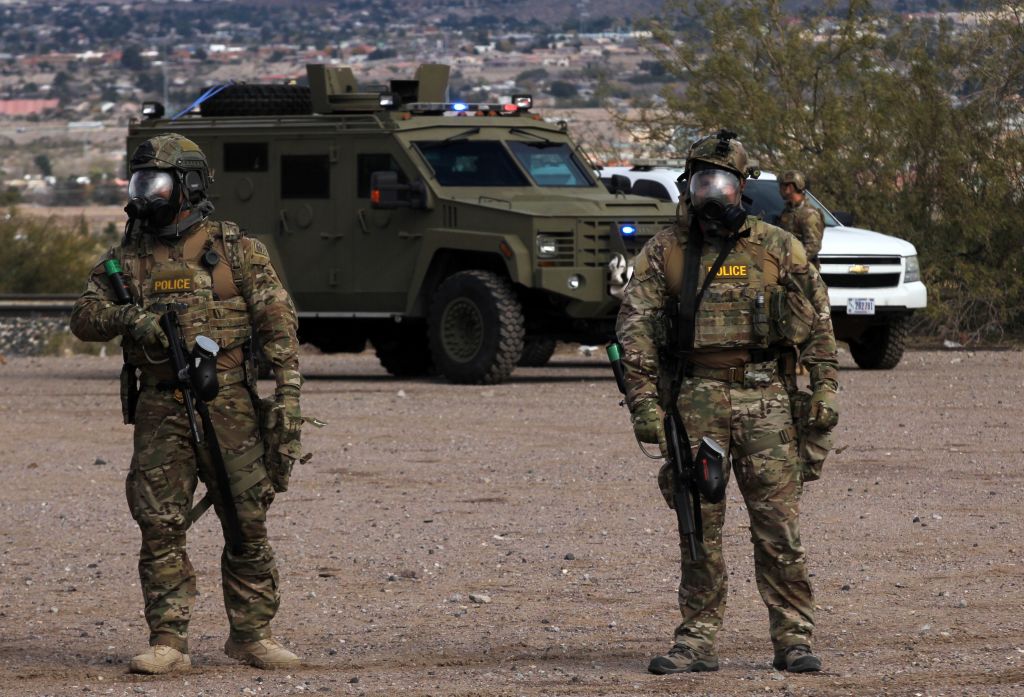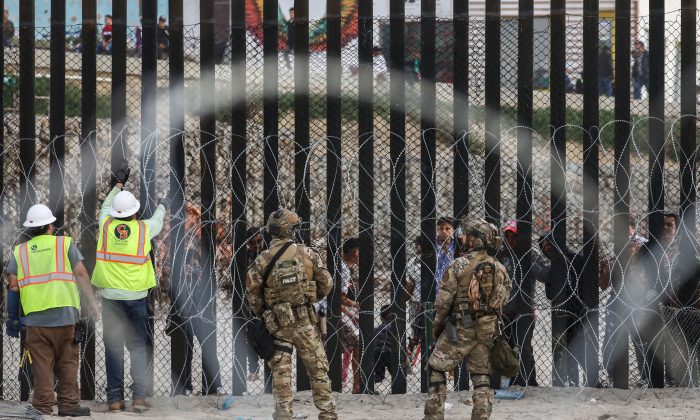The deployment of United States troops to the border with Mexico is set to continue for another 45 days after Secretary of Defense Jim Mattis signed the extension over the weekend.
The extension would keep some 4,000 troops at the border through the end of January to help U.S. Customs and Border Protection guard against thousands of migrants who have poured into Tijuana and attempted to overwhelm the agents on Nov. 25.
Another 1,600 troops who are currently at the border would go home.
The initial federal deployment was scheduled to end Dec. 15, but Mattis said previously that the deployment could be extended based on the situation at the border.
“That’ll be mission-dependent, situation-dependent if they need to be extended,” Mattis told reporters in November. “Some of those troops certainly will be home, I would anticipate they would be. But some troops may not be or some new troops may be assigned to new missions. But this is a dynamic situation.”
A Pentagon spokesman, Lt. Col. Jamie Davis, confirmed the proposed extension and said it refines the military support so that “it remains aligned with the current threat,” but declined to give details.
The troops at the border have played support roles for Border Patrol agents stretched thin by the current threat of thousands of fighting age males and a much smaller percentage of women and children attempting to barge into the country. Agents used tear gas to disperse the mob on Sunday.
The troops departing the border will include those who installed concertina wire and other obstacles to heighten the difficulty of crossing the border; those who will remain will continue to install and repair wire barriers and support Border Patrol agents. Some of the troops who are in Texas and Arizona are expected to shift to California as officials focus on the Tijuana area.


Request for Help
The Department of Homeland Security (DHS) asked for help with controlling the situation at the border from other federal agencies.
Secretary Kirstjen Nielsen sent requests to a number of other departments, including the Department of Energy, the Department of Interior, and the Department of Justice, asking whether they had law enforcement personnel they could send to the border, reported Politico.
“Consistent with the President’s direction to do all within our authority to secure U.S. borders, I am seeking your assistance and ask you to prioritize efforts to help us prevent illegal entry into the United States,” Nielsen wrote.
The Department of Justice has already committed to dispatching officers to the border, an unnamed DHS official told the outlet.
DHS spokeswoman confirmed the requests.
“The President has made it clear that border security is a top administration priority,” spokeswoman Katie Waldman said.
“In line with the President’s direction and given the very real threat we face at the border from potential mass migration actions—of course, DHS has reached out for assistance from partners across the federal government to defend our sovereignty, protect our frontline men and women, and secure our border.”
As of Friday, 2,400 troops were deployed in Texas, 1,800 in California, and 1,400 in Arizona.
In addition to the 5,600 troops at the border, another 2,100 or so National Guard troops are there, deployed by states.
The cost of using troops to help secure the border was estimated at $210 million last week, according to a report sent to Congress early last week.
The Associated Press contributed to this report.
